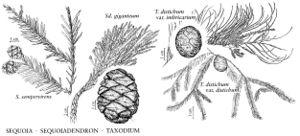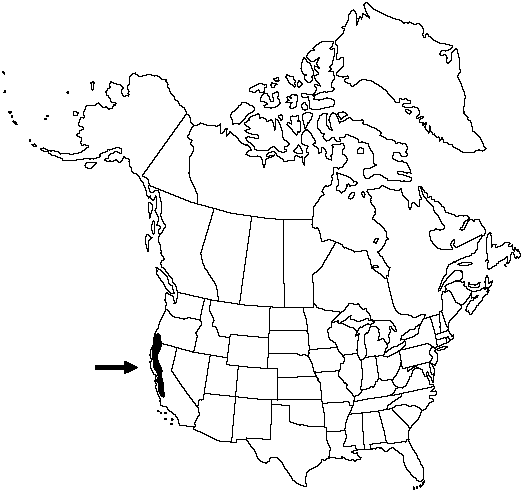Difference between revisions of "Sequoia sempervirens"
Syn. Conif. 198. 1847.
imported>Volume Importer |
imported>Volume Importer |
||
| Line 59: | Line 59: | ||
|publication year=1847 | |publication year=1847 | ||
|special status=Illustrated;Endemic | |special status=Illustrated;Endemic | ||
| − | |source xml=https:// | + | |source xml=https://bitbucket.org/aafc-mbb/fna-data-curation/src/2e0870ddd59836b60bcf96646a41e87ea5a5943a/coarse_grained_fna_xml/V2/V2_496.xml |
|genus=Sequoia | |genus=Sequoia | ||
|species=Sequoia sempervirens | |species=Sequoia sempervirens | ||
Latest revision as of 20:23, 5 November 2020
Trees to ca. 110 m; trunk to 9 m diam.; crown conic and monopodial when young, narrowed conic in age. Bark reddish brown, to ca. 35 cm thick, fibrous, ridged and furrowed. Branches downward sweeping to slightly ascending. Leaves 1–30 mm, generally with stomates on both surfaces, the free portion to 30 mm, those on leaders, ascending branchlets, and fertile shoots divergent to strongly appressed, short-lanceolate to deltate, those on horizontally spreading to drooping branchlets mostly linear to linear-lanceolate, divergent and in 2 ranks, with 2 prominent, white abaxial stomatal bands. Pollen cones nearly globose to ovoid, 2–5 mm, borne singly on short terminal or axillary stalks. Seed cones 1.3–3.5 cm. Seeds flattened, 3–6 mm, leathery. 2n = 66.
Habitat: Coastal redwood forests
Elevation: generally below 300 m, occasionally to 1000 m
Discussion
Redwood is the only naturally occurring hexaploid conifer. It is one of only a few vegetatively reproducing conifers (from stump sprouts) and possibly the tallest tree species known. Winter buds, though small, are evident.
Redwood, including Sequoia sempervirens and Sequoiadendron giganteum, is the state tree of California.
Selected References
None.

